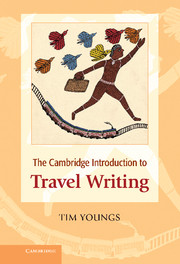Book contents
Chapter 7 - Inner journeys
Published online by Cambridge University Press: 05 May 2013
Summary
Journeys rarely begin where we think they do.
Colin ThubronThe most foreign territory will always lie within.
Sara WheelerThe journey into the self is often identified by critics as a feature that distinguishes modern travel from its precursors. There are three main reasons for this view: the focus of Romanticism on inner consciousness and its relationship to the external world, the introduction of psychoanalysis in the late nineteenth century, and the perception that there are few or no places in the world left to discover. These developments, it is often said, impel the interior voyage into the self and provide the conceptual framework and metaphors for the expression of that voyage. In fact, the inward journey is not in itself new. For millennia, pilgrimage depended upon a correlation between one’s inner state and a ritual physical movement to a sacred destination, often along prescribed routes. Nor is self-exploration a modern innovation. What has helped bring about a change in the direction of travel writing since the late nineteenth century, however, is the influence of Sigmund Freud’s concept of a divided self driven by unconscious fears and desires. Freud’s ideas unsettled the belief in an authoritative and stable author-narrator. They also ushered in the theme of psychological examination, which became as important in some narratives as the actual travel that produced or accompanied it. In the 1930s, in particular, ‘the teachings of Freud and Jung … were becoming sufficiently widely popularized to form part of the idiom of artists and writers’. One of the most prominent examples of this in the travel writing of the decade – indeed, of the century – is Graham Greene’s Journey Without Maps (1936), which will be discussed in this chapter.
- Type
- Chapter
- Information
- The Cambridge Introduction to Travel Writing , pp. 102 - 114Publisher: Cambridge University PressPrint publication year: 2013



